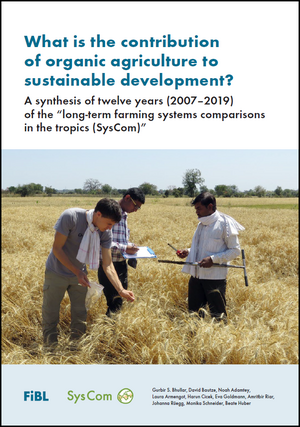Policy briefs & reports
Policy briefs
FIBL (2024). Cultivating change with agroecology and organic agriculture in the tropics: Bridging science and policy for sustainable production systems. Research Institute of Organic Agriculture FiBL, Frick. Read more
SWISSCO (2023). Climate-Smart Agriculture and Agroforestry in Cocoa. Guidance Document on Approaches, Financing Needs and Opportunities. Swiss Platform for Sustainable Cocoa (SWISSCO). Bern, Switzerland. Read more
FAO, Biovision Foundation, Food Policy Forum for Change & Agroecology Coalition (2023) Agroecology dialogue series: Outcome brief no. 3, January 2023 – Agroecology as a response to agri-input scarcity. Rome, FAO. Read more
Graeub, B., Dietemann, L., Nicolay, G. L., Bautze, D., Huber, B. (2023) Advancing ecological organic agriculture in Africa. Research Institute of Organic Agriculture (FiBL), Frick, Switzerland. Read more
Riar, A. and Bhullar, G. S. (2017) Long-term sustainability of cotton-based farming systems in India - An evidence based objective brief for policy interventions (Policy brief: 2017-SysCom-01) released during Organic World Congress 2017 (New Delhi), India. Read more
Reports
A synthesis of twelve years (2007–2019) of the “long-term farming systems comparisons in the tropics (SysCom)
In 2021, the SysCom team published a first report (download) that provided a comprehensive synthesis of the scientific findings of SysCom and presented it in a form that is easy to understand for an ‘educated non-expert’ audience. The findings address the differences between alternative (organic and agroforestry) and conventional production systems in terms of:
- Productivity: yields of main and by-crops
- Profitability: gross margins and return on (economic and labour) investment
- Soil fertility and quality: nutrient availability, soil organic carbon, and other soil physico-chemical properties
- Other indicators: pesticide residues and nutrient content, biodiversity, resource use efficiency and agroecosystem resilience
The conclusions drawn from the results and subsequent recommendations for policy stakeholders, you can find here:

 tap and then scroll down to the Add to Home Screen command.
tap and then scroll down to the Add to Home Screen command.